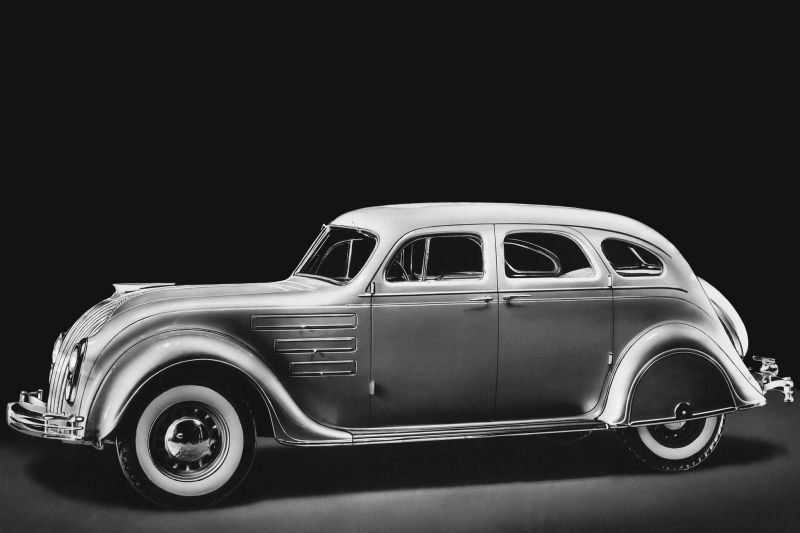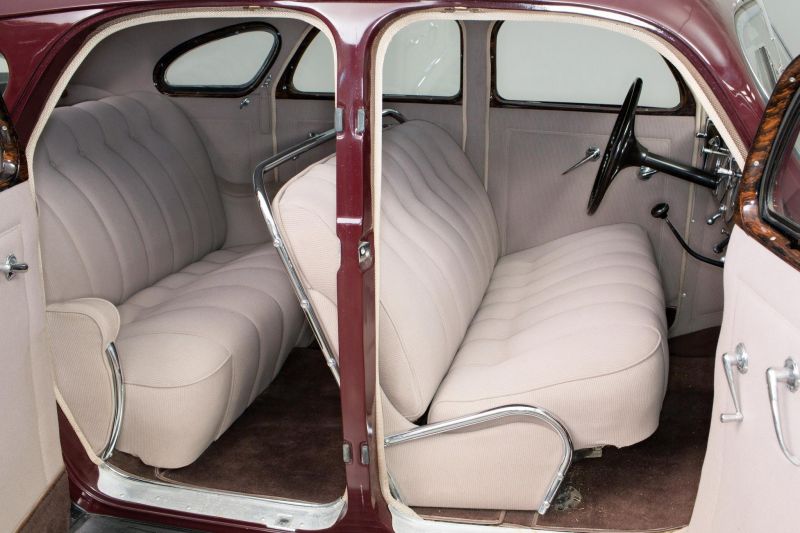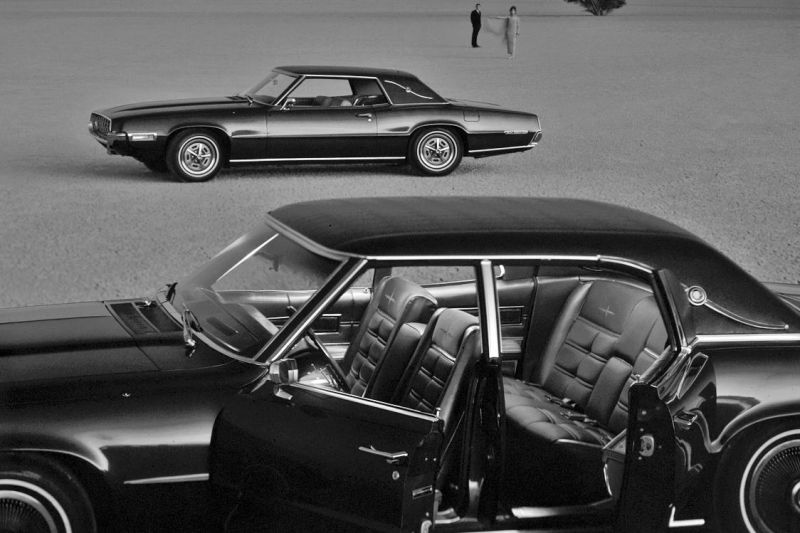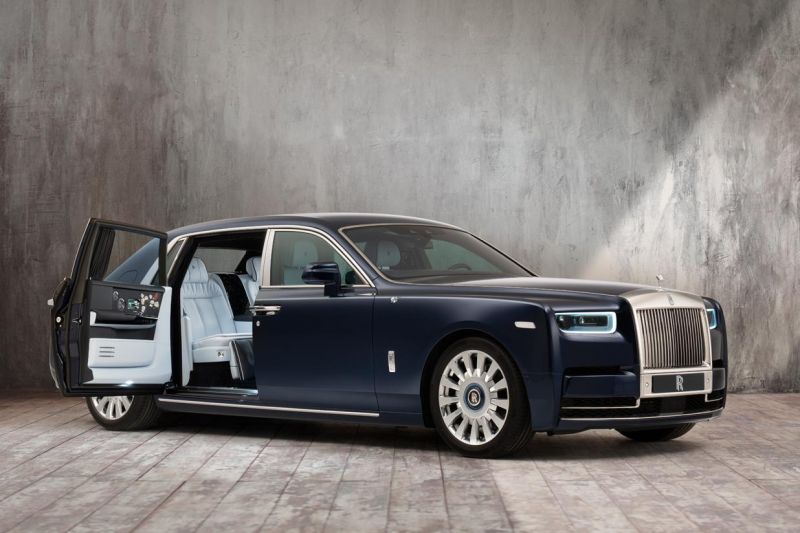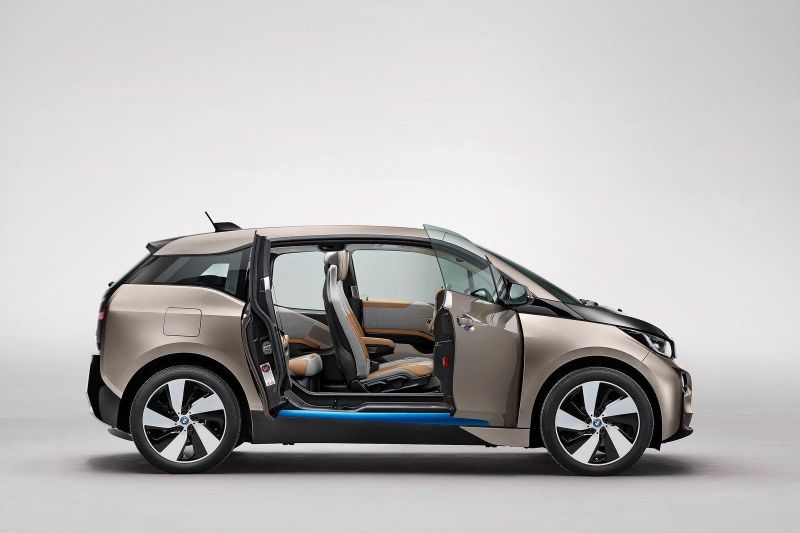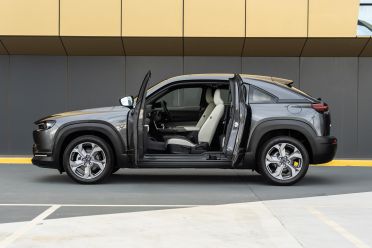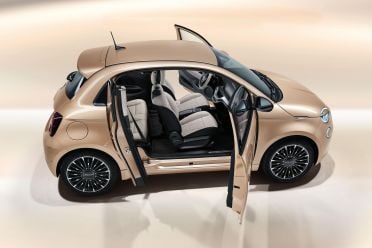The vast majority of doors on new cars today have a largely uniform design and opening mechanism. They’re hinged at the front of the door frame and allow vehicle occupants to shuffle in and out of the car by sliding out from the seat.
Coach doors, in contrast, are designed in the opposite manner, to the extent that they are hinged at the rear and thus open from the front.
Brief history
Today, French doors are well known for their use in homes and even higher-end fridges, where they open up to reveal wide, uninterrupted access to the space within.
Before the era of cars in the 18th and 19th centuries, the horse-drawn carriage was one of the best ways to display one’s wealth apart from owning a luxurious home.
Replicating home design, many higher-end carriages also featured a French door style, with the combination of normal front but rear-hinged passenger doors facilitating the same sort of wide access to the compartments inside.
Cars, in turn, were first seen as horseless carriages, and the early 20th century saw them adopt many of the same design principles. That included the French style of door design seen earlier on horse-drawn coaches.
Models such as the original Austin 7, Citroën Traction Avant, a variety of American cars such as the Chrysler Airflow, and even Bugatti’s ultra-expensive Type 57 all featured some type of rear-hinged coach door design.
Perhaps one of the more unique offerings in this space was the door design of the Fiat 600 Multipla that, despite using a four-door design, featured front, rather than rear, coach doors.
This worked such that the front doors were hinged at the rear of the door frame rather than the more typical ‘clamshell’ style arrangement that saw normal front doors paired with rear coach doors.
Coach doors have also been popularly known as suicide doors, and this convention comes largely from the perceived safety issues that these doors had in an era before cars were equipped with seatbelts.
Back then, motorists feared that a suicide door becoming ajar while the car was moving could be sucked wide open due to wind, causing the passenger to fall out of the car.
Other perceived risks included having less awareness of one’s surroundings when opening the door, to the extent that pedestrians or other road users could be struck when opening the door, or the occupant being trapped and then injured if the wider berth required to open a coach door wasn’t available.
The ’suicide door’ phrase arguably gained further notoriety when vehicles equipped with this style of door became the getaway car of choice for gangs in 1930s America.
Benefits and disadvantages
Perhaps the greatest benefit of a car having coach doors is easier ingress and egress for rear seat passengers. In many cases, rear doors that open from the front allow these passengers to gracefully walk in and out of the car, rather than having to awkwardly bend or otherwise contort their body to access the rear seats.
Models with coach doors, due to their rarity today, also have their own distinctive, more inviting style and character.
Although cars today are equipped with seatbelts and other systems to nullify many of the apparent safety risks described above, fundamentally they may continue to be more difficult to open in tighter parking spots or congested spaces, depending on the specific design of the door.
Moreover, in several modern cars featuring a coach door design, the rear doors are held closed by their front counterparts, to the extent that the front doors must first be opened before rear passengers can open their doors.
This, in turn, could have an impact on usability, especially in situations where only the rear passengers need to be quickly dropped off or picked up by the driver.
Cars on sale today with coach doors
Arguably the most notable proponent of coach doors today is Rolls-Royce, with the entire range (including even the Cullinan SUV) being equipped with a coach door design.
In models featuring more than two doors, such as the Phantom and Ghost sedans in addition to the Cullinan described above, Rolls has used the coach door concept to create a very elegant, uniform door handle design that stretches from the front to the rear doors.
Other models featuring this door concept include the soon to be superseded BMW i3. The combination of a coach door design with a carbon-fibre reinforced polymer chassis actually uniquely allows the Bavarian brand to maximise spaciousness by eliminating the B-pillar entirely without any compromise to body rigidity.
While this creates an open-air feeling when entering the car, it does come at the cost of mounting the front seatbelts on the rear doors, creating a risk of a potential injury if the front passengers do not unclip their seatbelt before the rear occupants open their doors.
Mazda’s MX-30 also continues the tradition of the previous RX-8 in featuring ‘freestyle doors’, or Mazda-speak for coach doors. Although this improves entry into the car, much like the BMW i3 above, the smaller size of the rear door has the disadvantage of having a fixed window that cannot be rolled down or opened.
Fiat’s new 500 3+1, as the name suggests, takes a similar approach to the i3 and MX-30 above but applies it to the right side of the vehicle only, to create a secondary rear door. The Italian marque contends that this smaller ‘fourth’ door makes it easier to load and unload very small children into the rear seats, and to fit baby seats as required.
It’s unclear whether this particular car will be available in Australia, and whether the door placement would be switched to the left side of the car to ensure that the door opens onto the kerb rather than the road in our right-hand drive market.
In the commercial space, many utes are available in what is known as a king cab, club cab or extra cab configuration, including models such as the Nissan Navara and Mitsubishi Triton, amongst others.
This cab configuration is positioned as a halfway point between a single cab and a full double cab, and often incorporates a set of coach doors to enable easier access for the occasional use rear cabin.





